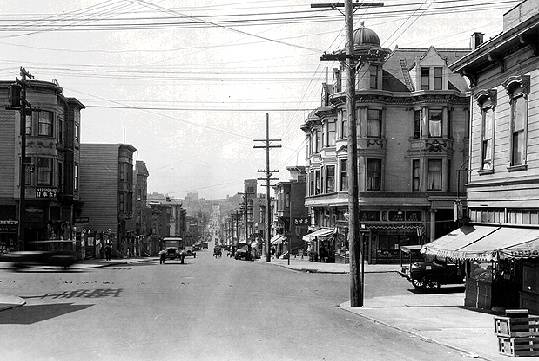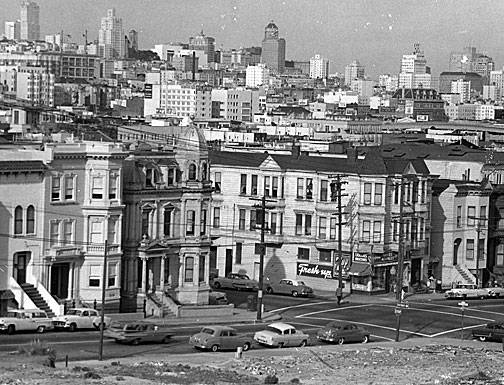Western Addition: A Basic History: Difference between revisions
(PC) |
No edit summary |
||
| Line 7: | Line 7: | ||
The area was built up after 1858 as the city's first middle-class expansion. The district's middle-class quality was lost after the 1906 earthquake when refugees poured into the neighbor-hood and threw up shacks and odd structures in every conceivable lot and corner. By the 1950s this diverse and relatively chaotic assortment of structures, dating from the 1800s, was seen as a cause of delinquency and public health problems. | The area was built up after 1858 as the city's first middle-class expansion. The district's middle-class quality was lost after the 1906 earthquake when refugees poured into the neighbor-hood and threw up shacks and odd structures in every conceivable lot and corner. By the 1950s this diverse and relatively chaotic assortment of structures, dating from the 1800s, was seen as a cause of delinquency and public health problems. | ||
The Western Addition A-1 clearance project led to the redevelopment of [[Japanese in Western Addition |Japantown]] and the Geary Boulevard corridor in the early 1960s. Once built, the surrounding area appeared even more | The Western Addition A-1 clearance project led to the redevelopment of [[Japanese in Western Addition |Japantown]] and the Geary Boulevard corridor in the early 1960s. Once built, the surrounding area appeared even more "blighted" by comparison, so redevelopment monies were directed toward continuing the removal of old housing stock. | ||
''--Chris Carlsson'' | ''--Chris Carlsson'' | ||
Revision as of 13:31, 18 January 2009
Unfinished History
Post and Laguna Streets, 1927
Photo: San Francisco History Center, SF Public Library
The area was built up after 1858 as the city's first middle-class expansion. The district's middle-class quality was lost after the 1906 earthquake when refugees poured into the neighbor-hood and threw up shacks and odd structures in every conceivable lot and corner. By the 1950s this diverse and relatively chaotic assortment of structures, dating from the 1800s, was seen as a cause of delinquency and public health problems.
The Western Addition A-1 clearance project led to the redevelopment of Japantown and the Geary Boulevard corridor in the early 1960s. Once built, the surrounding area appeared even more "blighted" by comparison, so redevelopment monies were directed toward continuing the removal of old housing stock.
--Chris Carlsson
Buchanan and Fulton, c. 1958
Photo: Kurt Bank


